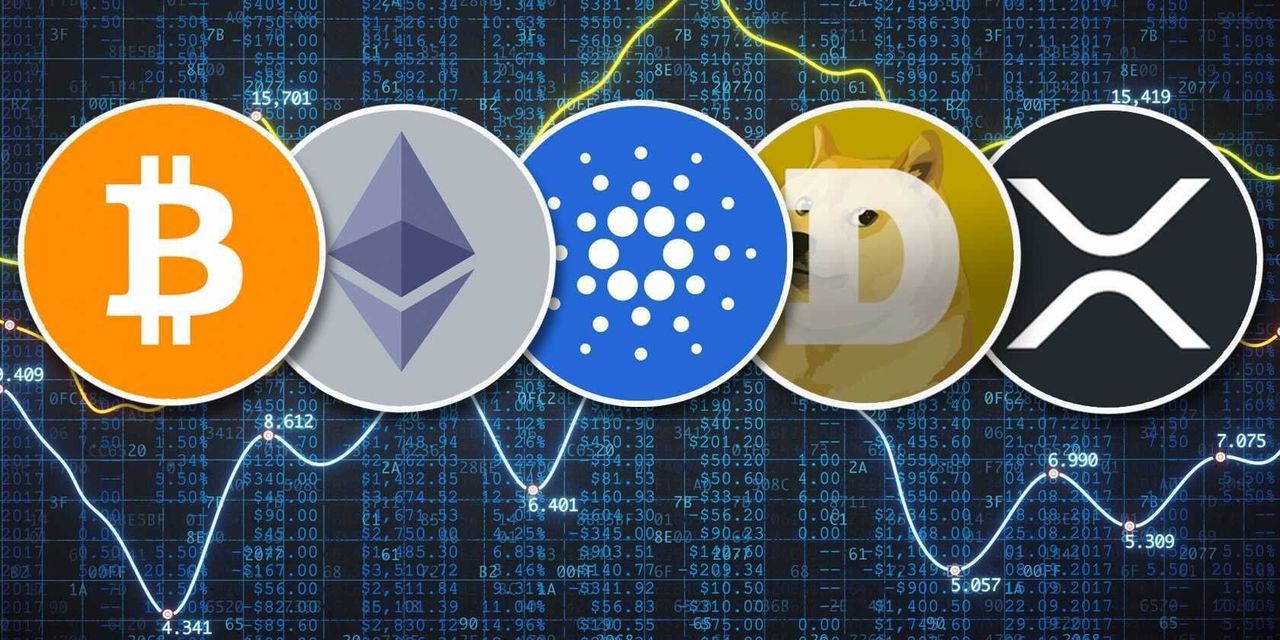Welcome back to Distributed Ledger. This is Frances Yue, crypto reporter at MarketWatch.
Bitcoin has had a stellar start this year, with an almost 40% rise so far, even though crypto lender Genesis filed for bankruptcy last week, only months after digital asset exchange FTX imploded in November. In this installment, I’ll break down what’s driving the largest cryptocurrency’s rally.
Find me on Twitter at @FrancesYue_ to share any thoughts on crypto, this newsletter, or your personal stories with digital assets.
It is not only crypto – most markets tend to perform well in January, as fund managers rush to deploy money at the start of a year, according to Ivan Ivanchenko, managing partner at Phinom Digital. In fact, most risk assets rose so far this year, with the tech-heavy Nasdaq Composite logging a 8.8% gain, according to FactSet data.
Meanwhile, bitcoin was heavily shorted in November and December after FTX’s collapse. As the crypto’s price rose unexpectedly in January, some short sellers were forced to close their positions and buy bitcoin, pushing the crypto’s price even higher.
Bitcoin’s rise also comes as investors’ confidence picked up, noted Luuk Strijers, chief commercial officer at crypto derivatives exchange Deribit.
After FTX’s implosion in November, the number of open contracts for bitcoin futures and options on Deribit reached the highest level in history, indicating a high level of activity, noted Strijers. “That’s because people were anticipating the worst which requires a need for them to hedge their holdings to protect more downside moves,” Strijers told Distributed Ledger in an interview.
The fear and panic in the crypto market may be easing slightly in January, with several signals in the derivatives market suggesting a comeback of institutional interest. The spot price of bitcoin is lower than the futures prices, showing that traders believe bitcoin’s price will rise, according to data from several exchanges.
In addition, there are more call options trading in the market than put options, signaling a rise in bullish sentiment, noted Strijers. Call options allow traders to buy an asset at a predetermined price, while put options allow traders to sell an asset at a predetermined price.
Despite the recent rally, Phinom’s Ivanchenko expects further downside for bitcoin, which may fall below its previous low of $15,480, said Ivanchenko. “I prefer to think of the market right now as having more risks than opportunities,” Ivanchenko said. “We don’t know the weakness of certain links.”
The macroeconomic environment remains challenging, with still high inflation and a possible recession on the way at least in the U.S. It is also unclear how Genesis’s bankruptcy may spill over to other companies, including its corporate parent Digital Currency Group and its sister company Grayscale Investments, which owns the world’s largest bitcoin fund GBTC, noted Ivanchenko.
Read: Jeremy Grantham says ‘easiest leg’ of stock-market bubble burst is over. Here’s what’s next.
Meanwhile, after several major crypto companies’ collapsed last year, “regulators can push the market to new lows, easily,” said Ivanchenko.
Deribit’s Strijers holds a different view. He expects the rally to continue with a market in a “recovery mode.”
The impact of the implosions of FTX and Genesis on most large crypto companies are already known and priced in, noted Strijers. “I think that people realize it, and the Genesis problem even though bad and unsettled, is manageable,” said Strijers.
Tesla didn’t buy or sell any bitcoins in the fourth quarter of 2022, though the largest cryptocurrency fell to a two-year low of $15,480 in November, after FTX filed for bankruptcy. Tesla invested $1.5 billion in bitcoin in early 2021, when the crypto was trading above $30,000.
Still, the electric car maker recorded a $34 million impairment loss in the fourth quarter, recording the value of its digital asset holdings at $184 million on Dec. 31, down from $218 million on Sept. 30.
Bitcoin prices rose 10% during the past week, and was trading at around $23,027 on Thursday, according to CoinDesk data. Ether ETHUSD, -1.67% gained 5% over the same stretch to around $1,601, CoinDesk data shows.
Shares of Coinbase Global Inc. COIN, +0.49% rallied 8.6% for the week to around $53.67. MicroStrategy Inc. MSTR, -0.21% rose by 9.6% thus far on the week, to $242.77.
Crypto mining company Riot Blockchain Inc. RIOT, -1.61% surged 7.1%, to $6.19, as of Thursday. Shares of rival Marathon Digital Holdings Inc. MARA, were up 17.9% at $8.65, over the past week. Ebang International Holdings Inc. EBON, -4.31% lost 10.9% over the past week and was trading at $8.09.
Overstock.com Inc. shares OSTK, +1.80% were trading up 11.3% to $22.48, over the week.
Shares of Block Inc. SQ, +0.52%, formerly known as Square, gained 13.2% to $80.32 for the week thus far. Tesla Inc. shares TSLA, +10.97% were up 24% to $157.99.
PayPal Holdings Inc. PYPL, +2.16% advanced 3.6% over the week, to trade at around $79.56. Nvidia Corp. NVDA, +2.48% added 17% at $197.42 for the past week.
Advanced Micro Devices Inc. shares AMD, +0.33% obtained 10.7% to $74.92 for the week.
Among crypto funds, ProShares Bitcoin Strategy BITO, +1.03% went up 9.3% over the week to $14.64 Thursday, while counterpart Short Bitcoin Strategy ETF BITI, -0.93% declined 8.8% to $27.53. Valkyrie Bitcoin Strategy ETF BTF, +0.66% increased 9% over the past week to $9.20, while VanEck Bitcoin Strategy ETF XBTF, +1.11% climbed 5% to $23.39.
Grayscale Bitcoin Trust GBTC, +1.07% were up 5.5% for the past five days to $12.13 on Thursday.
Retail brokerage Charles Schwab late Wednesday publicly criticized the New York Stock Exchange for its handling of a trading glitch this week.
Frances Yue covers the cryptocurrency market for MarketWatch.
Visit a quote page and your recently viewed tickers will be displayed here.


